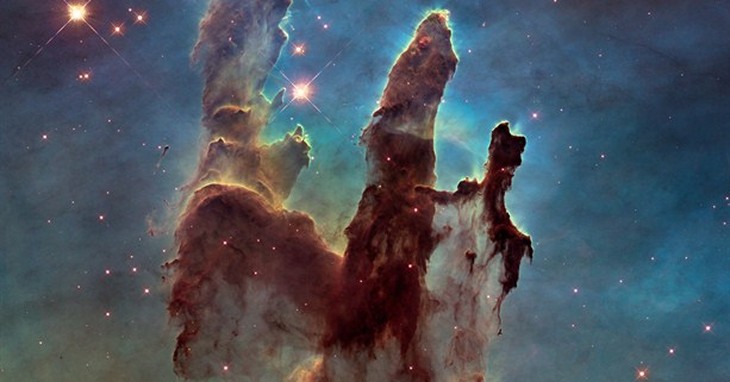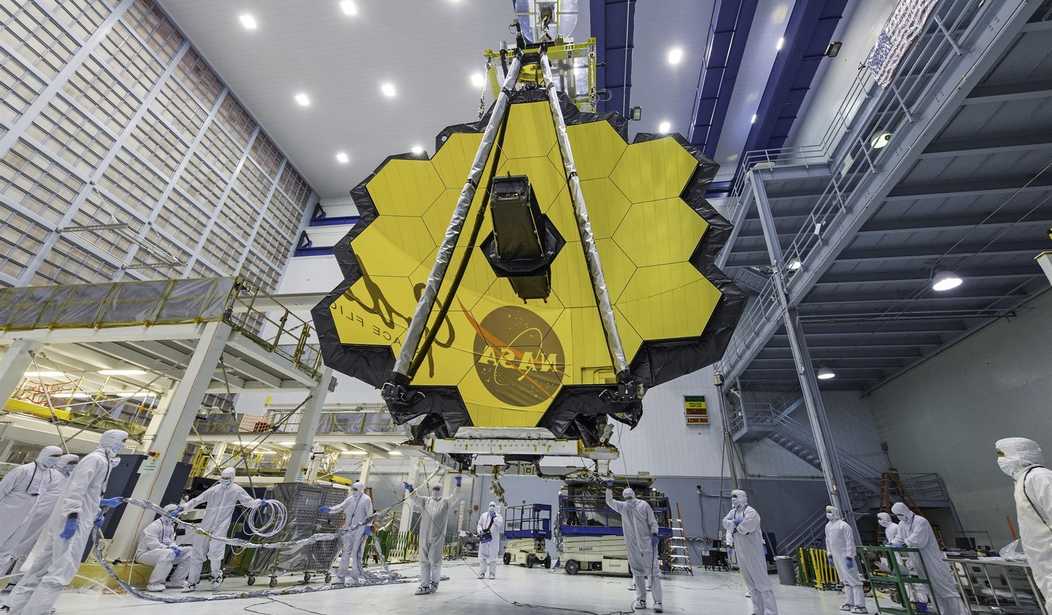This story is not for cynics, nor folks who lack imagination or national pride.
After nearly 40 expensive years of dreaming, planning, designing, building, congressional whining, testing, and hoping, NASA and its army of very smart people have placed into solar orbit a powerful new seven-ton telescope.
It’s capable of detecting infrared light that’s been traveling through the void of space at the speed of light since the earliest moments in time. That is to say, more than 13 billion Earth years ago.
The new telescope’s success so far is just one of our nation’s numerous recent space achievements: Landing robots to explore Mars. Flying a research robot through the Sun’s aura. Snatching a scoop of primordial soil from a distant asteroid and bringing it back in the fall of 2023.
And, of course, little Voyager I launched in 1977 now 10 years into interstellar space nearly 15 billion miles away and adding 38,210 more every hour. The loyal little craft still reports in daily via radio signals that take 19 hours to reach NASA’s giant Goldstone dish in California.
At its launch on Christmas Day, the James Webb Space Telescope cost $10 billion. That seemed like a lot until a year ago when a certain political party took over Washington and began spending several trillion dollars, with trillions more planned.
Since its launch, the 14,300-pound observatory has been traveling a million miles out to its reserved parking spot, there to orbit the Sun alongside Earth.
Along the way, the craft successfully accepted and executed intricate orders to deploy its solar panels and to spread a multilayered sun-shield the size of a tennis court.
Humans feel infrared light as heat. The instruments and mirrors must be kept frigid — assuming you consider minus-380 degrees Fahrenheit frigid — to detect the faint heat signatures traveling through space.
The craft also flawlessly unfolded and locked into place its 18 delicate, gold-covered mirrors, a total span of 21.3 feet, to detect the weakest light ever “seen” by humans.
Hundreds of things could have gone wrong and adversely affected the mission. But they didn’t, a tribute to the painstaking planning and testing by NASA, the Jet Propulsion Laboratory, and their corporate and international partners that delayed the launch for years.
The craft’s trajectory and movements, ending with a five-minute braking rocket burn Monday, went so smoothly and precisely that precious maneuvering fuel was conserved, likely doubling the telescope’s scheduled 10-year operational lifespan.
More glitches are possible before the first images are downloaded come summer. Each of the telescope’s 18 mirrors, for instance, has seven separate devices to adjust its angles one nanometer at a time to refine the collective focus on the weak incoming starlight.
The craft is stationed facing deep space on the far side of Earth from the Sun. There, the gravitational pulls of both bodies are balanced to help stabilize its own “little” holding orbit, which is actually larger than the Moon’s orbit around Earth as both orbit the Sun.
The Webb telescope is 100 times more powerful than the Hubble Space Telescope, launched in 1990, that has delivered for study over the ensuing years thousands of stunning images of distant galaxies, clouds of space dust and gases, and star nurseries where new stars are forever forming.

Webb should be able to “see” through ever-expanding space far beyond anything yet recorded, back perhaps to within a few hundred million years of the original Big Bang.
About a quarter of its initial time will be devoted to exploring nearly 4,500 already-confirmed exoplanets in our Milky Way, newly-discovered Earth-like planets whose relation to their stars suggests the possibility of life, at least as we know it. There could be millions more.
Webb’s powerful mirrors and spectrometers will detect the composition of the atmospheres of those distant bodies. Some no doubt are merely rocky orbs, others, so-called Super-Earths, are mysterious bodies up to 10 times larger than our planet, some so close to their star that metal would be vaporized.
The scale of space has awed me ever since childhood when I tried to draw a map of the stars over our rural Ohio fields. An hour into the exercise with the naive eyes of an eight-year-old, I observed to my father that all the stars had moved.
“No,” he said, “we have.” Planet Earth, it turns out, is moving through space at eight miles per second and rotating about 500 miles an hour at the same time.
A beam of sunlight takes eight minutes and 20 seconds to reach Earth, traveling at 186,000 miles per second. In one single light-year, that light would travel 5,878,625,370,000 miles.
You probably know of Orion’s Belt, those three bright stars in a row in our night sky. Look up this evening. That blink of light you see has been traveling toward your eyes since 678 A.D. when the Siege of Thessalonica ended and St. Agatho began his short reign as Pope.
That’s 1,344 light-years multiplied times 5.878,625,370,000 miles. Math was not my strength, so I’ll leave you to calculate the total distance of that light beam’s journey.
Now, if all goes well in the next several months of set-up and adjustments, the Webb Telescope will begin capturing light that’s been traveling toward its gold mirrors for around 13,000,000,000 years, about eight billion years longer than the spinning Earth that launched that telescope 31 days ago.














Join the conversation as a VIP Member